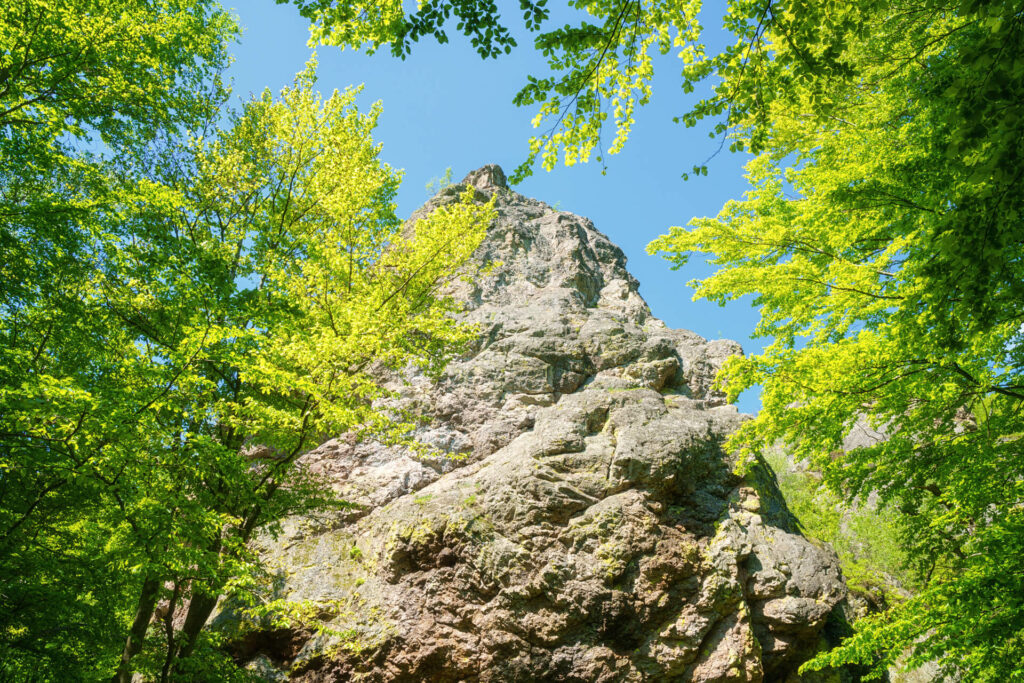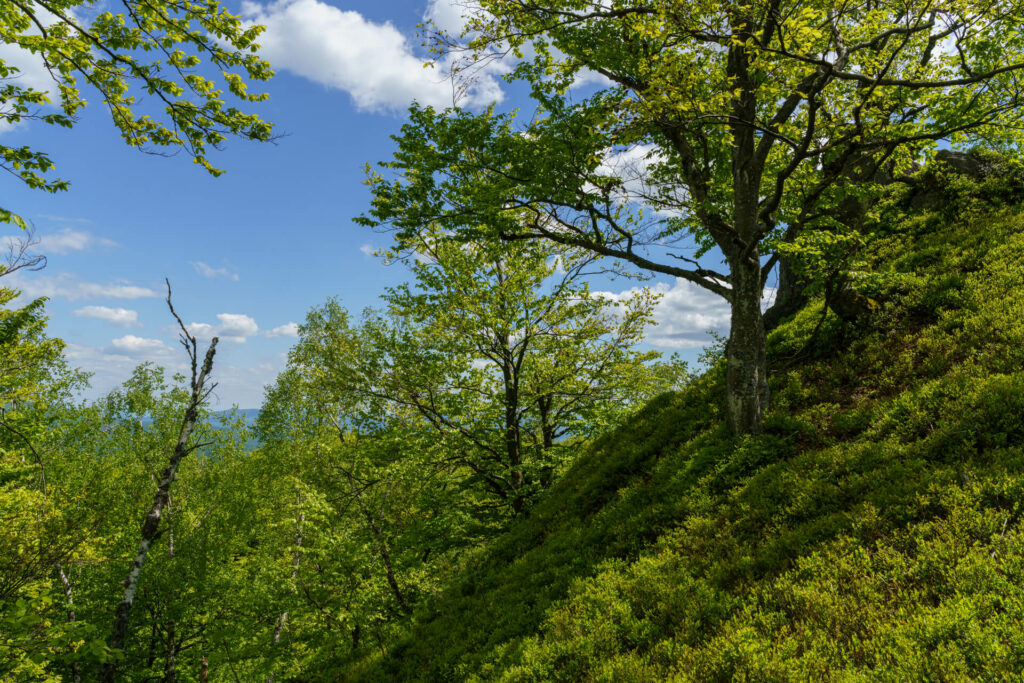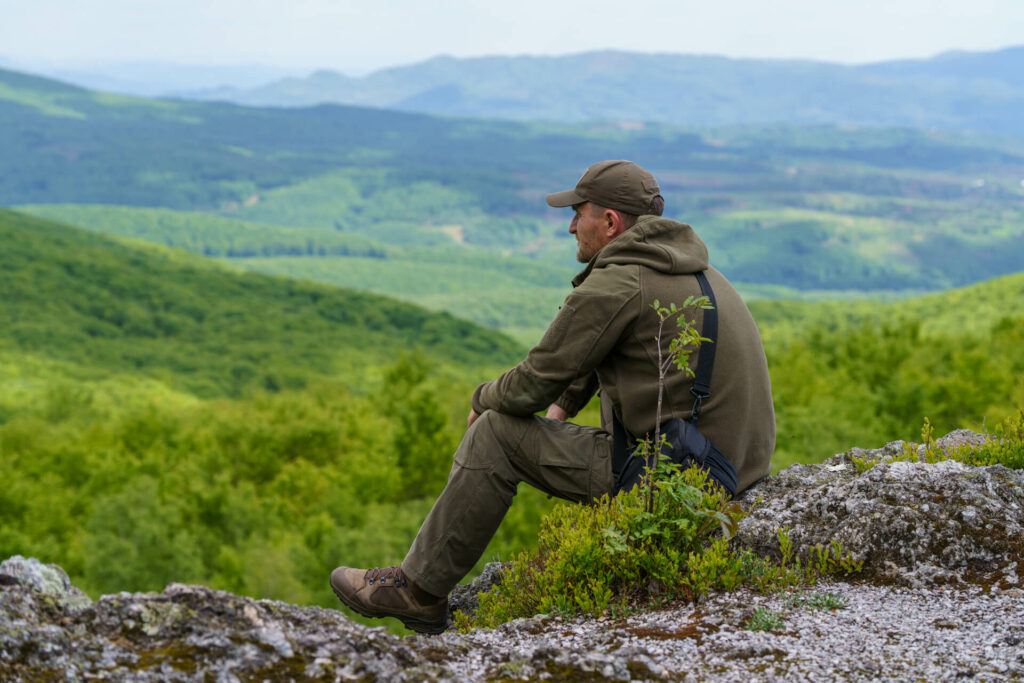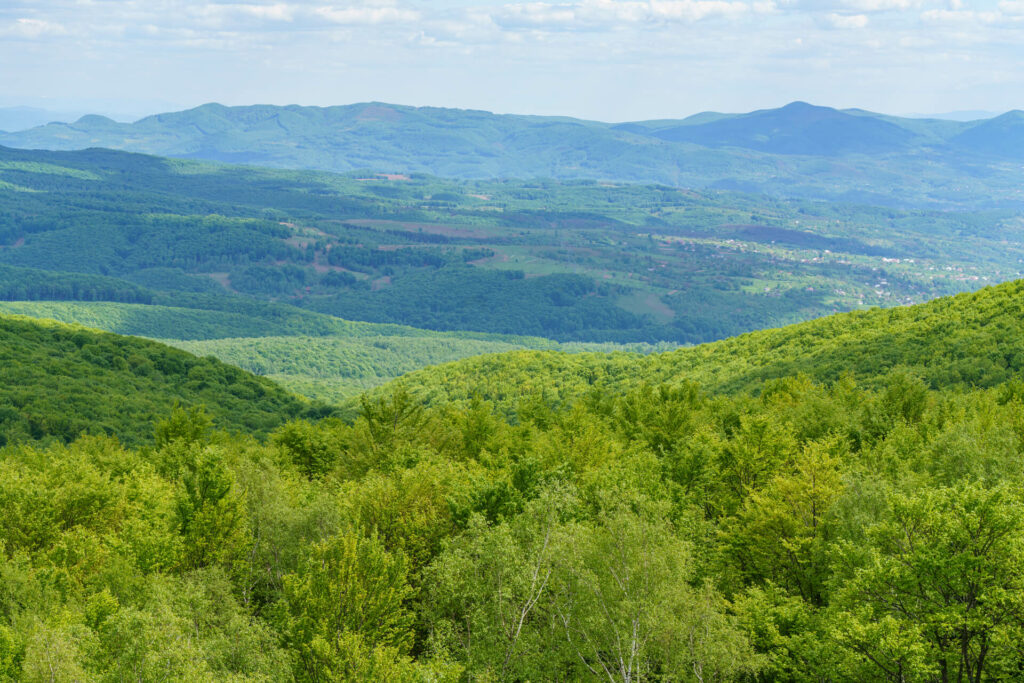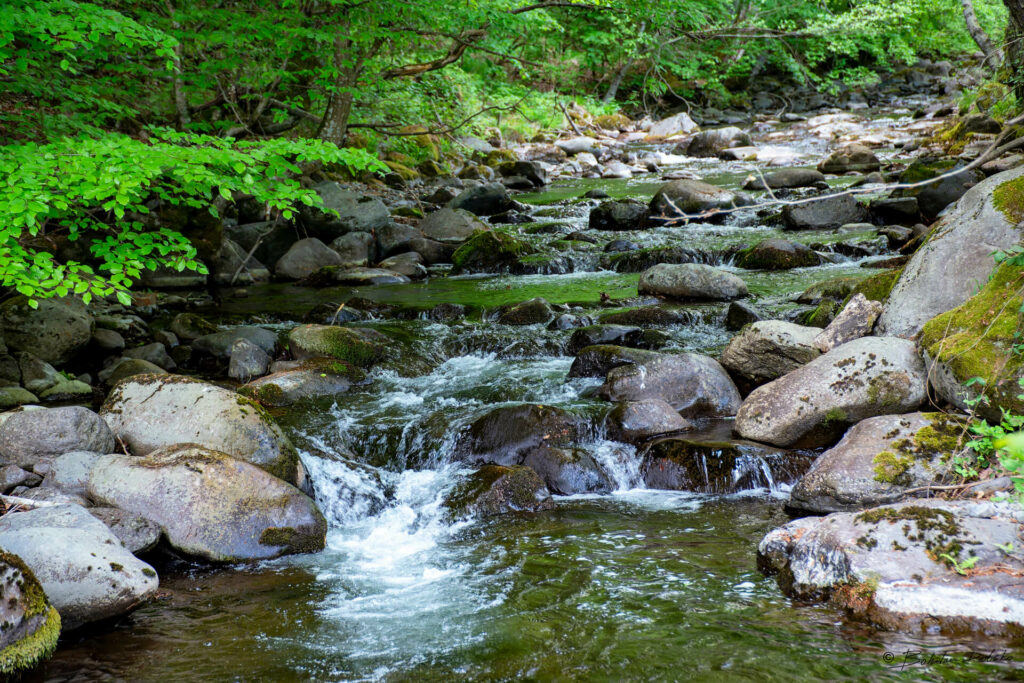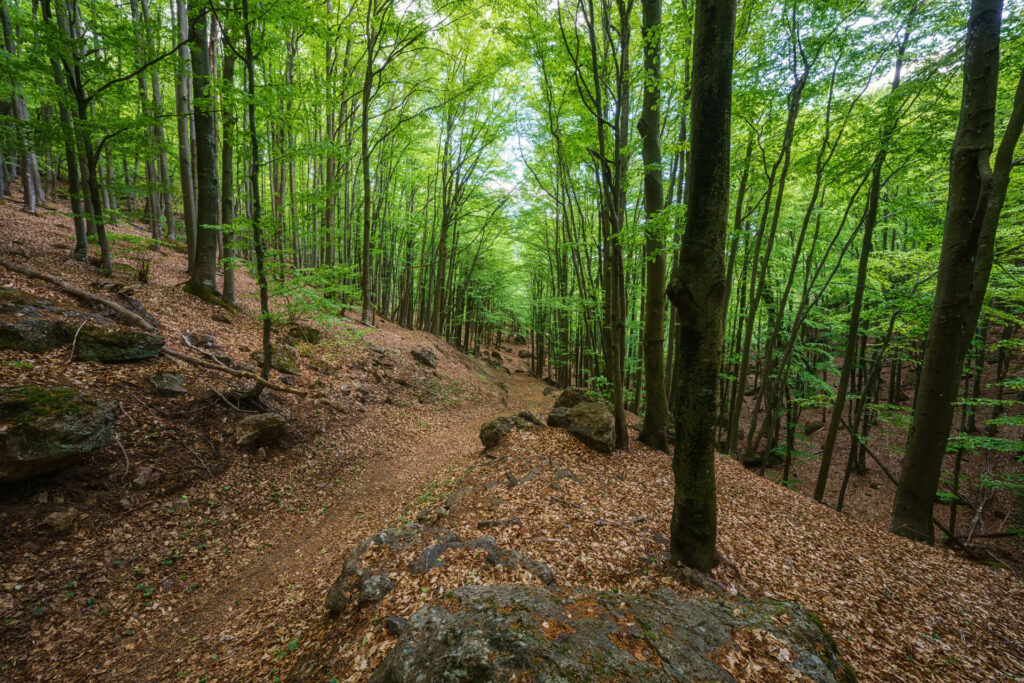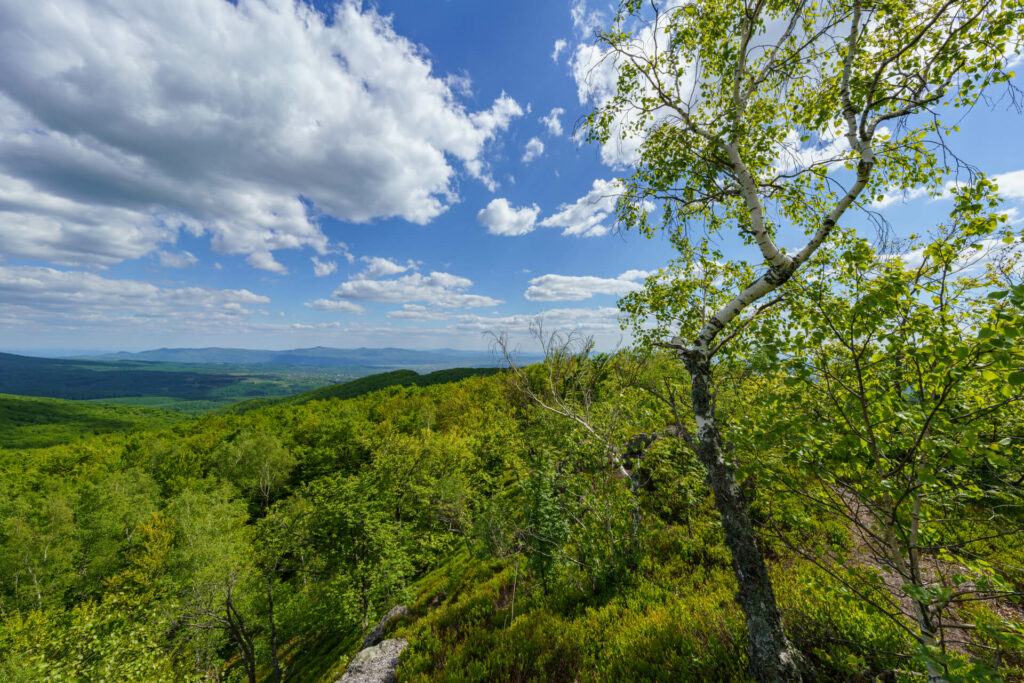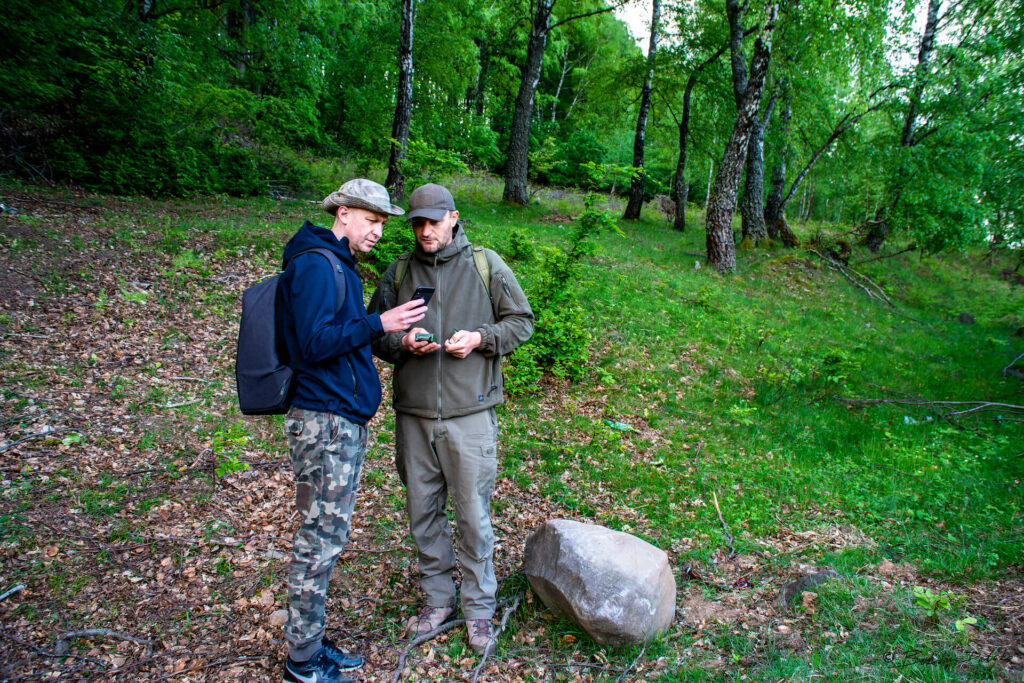Zacharovanyi Krai
The Zacharovanyi Krai National Nature Park (NPP) – whose name means the ‘enchanted land’ – is the only Ukrainian nature park founded on volcanic rocks, which form the southwestern slopes of the volcanic Vyhorlat-Hutinsky ridge. Amongst the most popular tourist locations are Smerekovyi Kamin – or the ‘spruce stone’, which looks like the top of a spruce tree, Tron – or the ‘throne stone’, and Rozkolotyi Kamin – or the ‘split stone’. All these rocks were formed during a period of heavy volcanic activity some 5-6 million years ago, and sculpted by the elements over time, they acquired striking shapes that never fail to amaze visitors.
Park area 61,01 Sq km.





The total area of the Zacharovanyi Krai NPP is 6101 hectares, including some 4350 hectares that were added to the territory of the park by presidential decree in 2019. Within the park are also two areas of primeval beech forests totaling around 1258 hectares, which are part of the UNESCO World Heritage Site – Ancient and Primeval Beech Forests of the Carpathians and Other Regions of Europe.
Another feature of the NNP is the Chorne Bagno moorland and its sphagnum moss bogs. Located at an altitude of 820-860 meters it is unique wetland area of national importance.
Expansion and consolidation of nature conservation areas. Since 2013, the Frankfurt Zoological Society (FZS) has supported and contributed to efforts to expand the Zacharovanyi Krai NNP. In 2019, a decision was made to expand the boundaries of the park by some 4350 hectares. Currently, FZS provides support to the park, for instance in lobbying for the practical implementation of the expansion and the approval of land registry and other legal formalities.
In 2021, as part of the implementation of the “Conservation of highly valuable primeval and old-growth forests in selected national parks in the Ukrainian Carpathians” project, FZS updated proposals for expanding the boundaries of the park. Therefore, it is proposed to bring in land with an area of 27,000 hectares as part of the park. This includes the state-run forestries of Dovzhanska, Svalyavska, Volovetska, and Mizhhirska. The highest mountain beech forests in Europe grow here. The integral massif of primeval forests – with an area of about 1700 hectares – is the largest massif of primeval forests that is not currently operated under the administration of the Nature Reserve Fund.
Also proposed for inclusion in the boundaries of the Zacharovanyi Krai NNP is Borzhava polony, incredible mountain meadows that are home to the sources of the Borzhava River and the main part of its basin, which would come under conservation management.
Cooperation with communities and support of nature-friendly business. As part of the implementation of the “Conservation of highly valuable primeval and old-growth forests in selected national parks in the Ukrainian Carpathians” project, FZS supports the implementation of the Borzhavska Velodrizina in order to improve the tourism potential of the park.
Biodiversity monitoring. To qualitatively monitor the state of biodiversity in the Zacharovanyi Krai NNP, FZS utilizes the Spatial Monitoring and Reporting Tool (SMART) system. The system helps to collect, measure, and evaluate biodiversity data effectively and efficiently. Smartphones and other necessary equipment were purchased and provided to park security personnel. Additionally, training and ongoing user support is provided. Acoustic receivers have been deployed to collect data on birds and bats, enabling species identification and population estimates – especially the background populations of bird species. Since 2021, camera traps have been used to monitor large predators.
Support for creating management plans. FZS aims to conserve wildlife and ecosystems, with a focus on safeguarding protected areas and outstanding wild places. FZS provides support to the Zacharovanyi Krai NNP as it carries out essential conservation tasks.
The conservation efforts in the Zacharovanyi Krai NNP are coordinated under the “Conservation of highly valuable primeval and old-growth forests in selected national parks in the Ukrainian Carpathians” project, a collaborative initiative aimed at effectively organizing and managing conservation work in the nature reserve. This consists of a multi-stage process:
- Assessment of the ecological, sociological, and cultural values and resources of the nature reserve, including their conditions, threats, and impacts.
- Formulating a 10-year conservation strategy.
- Creating a five-year action plan to maximize results in preserving high conservation value aspects of the nature reserve.
The project’s development and organization are being carried out by a team of FZS experts, nature reserve specialists, and local communities and other stakeholders. Management plans for the project are currently under development.
Operating cost support. Due to constraints on state funding as a result of Russia’s ongoing invasion of Ukraine, FZS has been providing ongoing financial support for the implementation of the conservation plan in the NNP since May 2022. This assistance includes procuring office space, communications support, fuel expenses, and maintenance and repair costs for vehicles.
Improving the ability to perform environmental protection tasks. As part of the“Conservation of highly valuable primeval and old-growth forests in selected national parks in the Ukrainian Carpathians”, of which FZS is the main partner, vehicles – including cars and motorcycles – and computer and IT equipment have been purchased for park employees, as well as uniforms for security personnel.
What do we do
By combining international experience with local knowledge and expertise, we support the preservation of the large areas of pristine and near-pristine nature in Ukraine. We mainly do this by supporting projects in major protected areas such as national parks, biosphere reserves, and large nature reserves.
